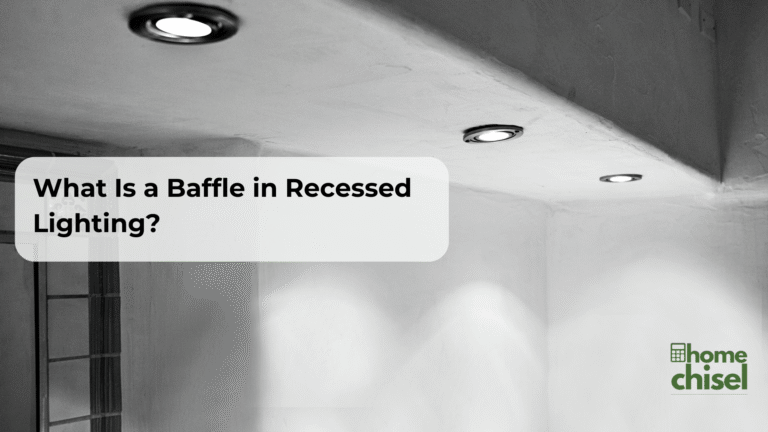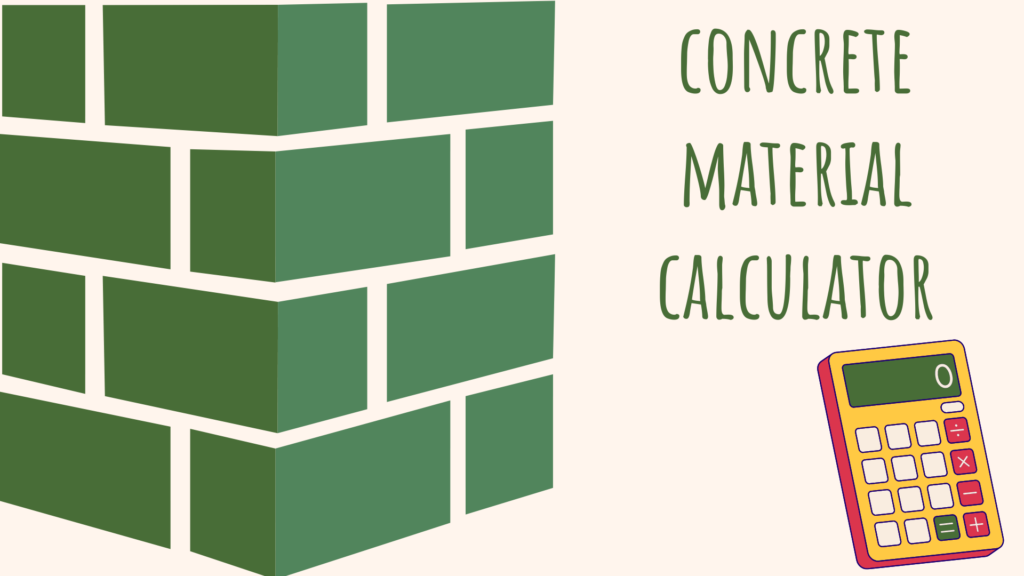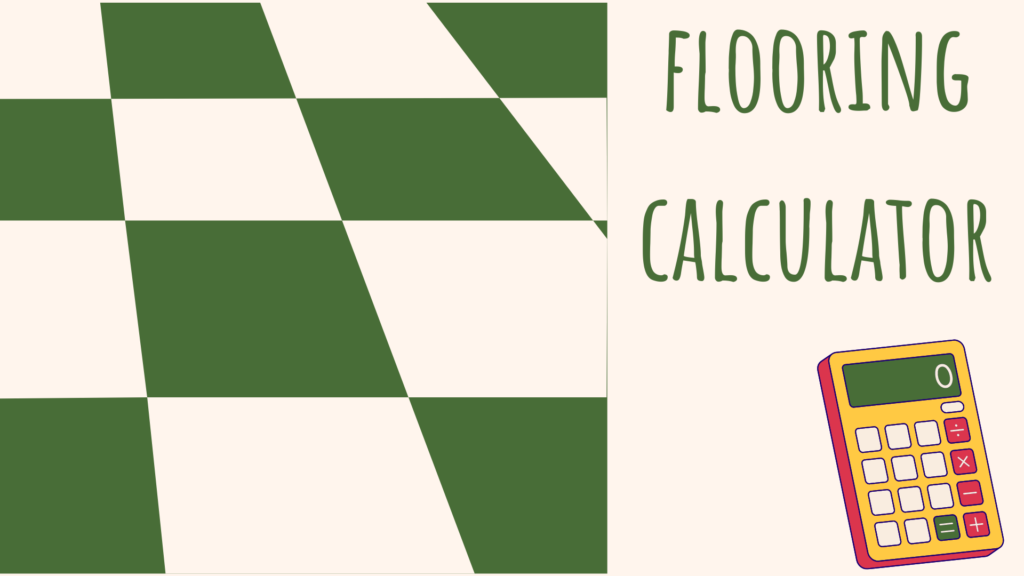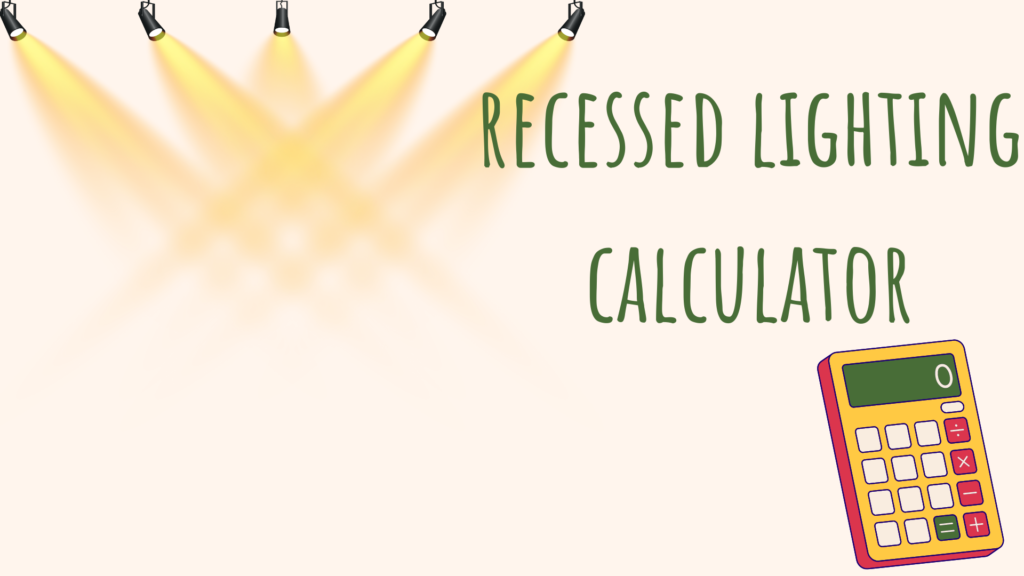When designing the perfect lighting scheme for your living room, it’s important to strike a balance between aesthetics and functionality. One of the most common ways to achieve this balance is through recessed lighting, or downlights, which blend seamlessly into the ceiling. However, the challenge lies in determining how many recessed lights are ideal for your living space. In this guide, I’ll Walk you through the factors that influence this decision and share tips to help you get it just right.
Table of Contents
Understanding the Role of Recessed Lighting in Your Living Room
Recessed lighting is not just a matter of installing a few fixtures and calling it a day. It serves several important roles in your living room’s lighting design. Recessed lights can dramatically affect the room’s ambiance and functionality, from providing even illumination to highlighting focal points.
Why Recessed Lights Are a Popular Choice for Living Rooms?
Living rooms are often the heart of the home, where family gatherings, entertainment, and relaxation take place. Recessed lighting allows for clean lines and a minimalist look, making the space feel airy and open. Unlike pendant lights or chandeliers, recessed lights don’t draw attention to themselves but instead provide an even and subtle illumination, which is perfect for various living room activities.
Benefits of Recessed Lighting in Enhancing Room Ambience
Recessed lighting is versatile and can be customized for different purposes, whether it’s creating mood lighting for movie nights or providing bright, task-oriented light for reading. By correctly positioning the lights, you can create zones within the room, enhancing the space’s functionality and feel. For example, dimmed recessed lights above the seating area can make the room feel cozy and inviting. In contrast, brighter lights above a coffee table or reading nook can provide optimal visibility.
Key Factors to Consider Before Installing Recessed Lights in Your Living Room

Before you start planning the placement and number of recessed lights, it’s crucial to understand how certain room features affect the lighting design. Let’s explore the key elements that should be considered for a successful installation.
The Importance of Room Dimensions in Lighting Design
The size of your living room plays a major role in how many recessed lights you’ll need. Larger rooms require more lights to ensure that the illumination is evenly distributed. However, a common mistake is overestimating the number of lights required. Typically, you can follow the simple rule of dividing the room’s total square footage by a factor of 4 to 6. For instance, a room measuring 16 feet by 20 feet (320 square feet) would need approximately 54 to 80 watts of lighting (or around 9 to 12 lights, depending on the wattage of each bulb).
Example: For a room that is 15 feet long and 20 feet wide with a standard 8-foot ceiling, the total square footage is 300. If we divide by 4 (for brighter rooms) or 6 (for softer lighting), you will need between 8 and 12 recessed lights.
| Room Size (sq. ft.) | 4-sq. ft. per light | 6-sq. ft. per light | Lights Needed |
| 200 | 50 | 33 | 5 – 8 |
| 300 | 75 | 50 | 8 – 12 |
| 400 | 100 | 66 | 12 – 16 |
Learn more about how to calculate recessed lighting for different room sizes.
How Does Ceiling Height Affect Recessed Light Placement?

Your ceiling height can significantly affect how recessed lights should be spaced. Higher ceilings require more powerful bulbs and wider spacing between the lights to ensure the light reaches every corner of the room effectively. For standard 8-foot ceilings, the lights should be spaced about 4-5 feet apart. For ceilings higher than 10 feet, you should increase the distance to 6 feet. Additionally, the type of ceiling—flat, vaulted, or sloped—can change how you approach light placement. You can learn more about these guidelines and how ceiling height affects recessed light placement here.
For example, in a room with a 10-foot ceiling, you might want to place your recessed lights about 5 feet apart to compensate for the increased distance from the floor. Here’s a simple guide to adjust based on ceiling height:
| Ceiling Height | Spacing Between Lights |
| 8-9 ft | 4-6 ft apart |
| 10-12 ft | 5-6 ft apart |
| Above 12 ft | 6-8 ft apart |
Read more about recessed lighting placement for different ceiling types.
The Impact of Existing Light Sources on Recessed Lighting Needs
It’s also important to consider the other light sources in your living room. Natural light from windows and supplementary lighting like floor lamps or table lamps can reduce the need for recessed lighting. If your living room is well-lit with natural light throughout the day, you may need fewer recessed lights to avoid over-lighting the space. Similarly, suppose you already have an overhead chandelier or pendant lights. In that case, you can plan your recessed lights to work harmoniously with these fixtures to enhance the overall illumination without redundancy.
How Many Recessed Lights Do You Really Need?
Determining the ideal number of recessed lights for your living room is more than just a one-size-fits-all equation. There are multiple factors at play, including room size, lighting goals, and ceiling height. Below are some key considerations that will guide you in determining the exact number of recessed lights your space requires.
A Simple Formula for Calculating Recessed Lights
As mentioned earlier, the general guideline is to use one recessed light for every 4-6 square feet of space. However, the exact formula will depend on the following:
- Measure your room’s dimensions—length, width, and ceiling height.
- Determine the type of lighting you need (ambient, task, or accent).
- Choose the right bulb wattage based on your lighting needs (generally, 60-75 watts per bulb for standard living rooms).
How Does Room Size Affect the Number of Lights Needed?
A larger room may need additional lighting to create an evenly distributed light, while smaller rooms may only need a few well-placed lights. If your living room is on the smaller side, you might only need a few recessed lights, and focusing on task-oriented lighting (such as the above reading areas) could be sufficient. On the other hand, large living rooms often benefit from a combination of general and accent lighting to create the desired effect.
Lighting Purposes: Task, Accent, and General Lighting Explained
Understanding the three main lighting purposes—task, accent, and general lighting—will help you decide how many lights are needed for each.
- Task lighting: Focuses on areas where activities like reading or working take place. This lighting is more concentrated and needs fewer fixtures.
- Accent lighting: Used to highlight architectural features, artwork, or specific areas of interest in the room. Accent lighting is typically more dramatic and requires fewer lights.
- General lighting: Provides overall illumination to the room. This is the foundation of your lighting plan and requires the most fixtures.
You may need more recessed lights for general lighting but fewer for task and accent lighting. For instance, in a room measuring 15 feet by 20 feet, you could need 6 to 8 lights for general illumination and perhaps just 2-4 for task lighting and accent features. Find out more about recessed lighting for vaulted ceilings.
Recessed Lighting Layout for Living Rooms: Where to Place Lights?
Choosing the correct placement of recessed lighting can significantly affect how well-lit and balanced your living room feels. It’s essential to consider both the light’s purpose and the room’s dimensions. The goal is to avoid dark spots while ensuring that no area gets over-illuminated.
The Ideal Spacing Between Recessed Lights in Living Rooms
In my experience, one of the most common mistakes homeowners make is either placing the lights too far apart or crowding them together. The spacing should depend on the ceiling height, the room’s overall size, and the purpose of the lighting. As a general rule, you should space recessed lights about 4-6 feet apart in a room with standard 8-foot ceilings. If your ceiling is higher, you’ll want to increase the distance between the lights accordingly.
For example, in a living room with a 10-foot ceiling, the distance between the lights might increase to 5-7 feet. This ensures even light distribution without creating harsh shadows or overly bright spots.
Common Mistakes to Avoid in Recessed Lighting Placement
Placement is key when it comes to recessed lighting. One mistake I often see is placing lights too close to walls, which can result in dark corners and uneven lighting. To ensure an even spread of light, try to keep recessed lights 2-3 feet away from the walls in an 8-foot ceiling room. For higher ceilings, increase this distance.
Another mistake is failing to plan for furniture placement. Thinking about how the light will fall on your seating area is essential. Positioning recessed lights directly above furniture or close to sitting areas will create unnecessary shadows.
How to Achieve Even Light Distribution with Recessed Lights?
To achieve even light distribution in your living room, I recommend the wall-washing technique, where recessed lights are aimed slightly at the walls to create a soft, uniform light effect. Additionally, ensure that your light pools overlap slightly to eliminate lighting gaps. This creates a seamless, welcoming environment.
A Guide to Different Recessed Lighting Styles and Fixtures
Once you’ve determined the ideal placement and number of recessed lights, the next step is choosing the appropriate style and fixtures that will complement your living room’s overall aesthetic.
Adjustable Trims and Their Benefits
Adjustable trims are a great option for more flexibility. These allow you to change the direction of the light depending on the area you want to highlight. I’ve found that they’re particularly effective in living rooms where you might want to shift the focus between different sections of the room, such as an art piece or a fireplace.
Choosing the Right Type of Light Bulbs for Your Living Room
The type of light bulb you choose can have a significant impact on the quality of your recessed lighting. LED bulbs are a popular option due to their energy efficiency and long lifespan. For a softer, warmer ambiance, I recommend using warm white LED bulbs (around 2700K) for the living room. If you’re aiming for a more modern, bright aesthetic, cool white LED bulbs (around 4000K) will offer a crisper light.
Popular Recessed Lighting Designs for Modern Living Rooms
When it comes to modern designs, sleek and minimalist recessed lighting fixtures are trending. Many people opt for fixtures with thin bezels that blend into the ceiling. For larger living rooms, multi-directional recessed lighting allows for a broader light spread and is perfect for highlighting architectural features or artwork.
To explore different styles and designs of recessed lighting, check out this detailed guide on Types of Recessed Lighting.
How to Calculate the Number of Recessed Lights You Need: Step-by-Step
The number of recessed lights you need depends on several factors, including room size, ceiling height, and the lighting style you’re going for. To simplify this process, I’ve broken it down into a few simple steps.
Using a Recessed Lighting Calculator for Accuracy
There are several tools available that can help you calculate the right number of recessed lights for your living room. However, the most accurate way to determine how many lights you need is by inputting room dimensions into a lighting calculator. Here’s how to get started:
Room Dimensions to Input
The first step in using a recessed lighting calculator is to measure your living room’s length, width, and height. These measurements will help the tool calculate the optimal spacing and number of recessed lights for your specific room.
How to Estimate Light Spacing Based on Ceiling Height
When using the calculator, make sure to input the ceiling height. A good rule of thumb is to space recessed lights half the ceiling height apart. For example, in an 8-foot high ceiling, lights should be spaced around 4 feet apart.
Check out our Recessed Lighting Layout Calculator for exact recommendations!
Living Room Lighting Ideas: How to Design Recessed Lighting for Your Space
Now that you have a better understanding of how to plan and calculate the number of recessed lights let’s talk about design ideas for creating a stunning living room lighting scheme.
Adding Accent Lighting to Create Focal Points
Accent lighting can be used to highlight your room’s focal points, such as a piece of artwork or a decorative feature. Place a few recessed lights near your focal points to draw attention to these areas while keeping the rest of the room lit.
Designing Lighting for High and Low Ceilings
In rooms with high ceilings, layered lighting is essential. Use a combination of recessed lights, pendant lights, and possibly even chandeliers to fill the vertical space. For low ceilings, stick to fewer lights spaced evenly apart to avoid overwhelming the room.
Combining Recessed Lighting with Other Fixtures for a Balanced Look
Recessed lights should be part of a broader lighting scheme. To create balance, I often combine recessed lights with table lamps, wall sconces, and floor lamps to soften the light and add warmth to the space.
Recessed Lighting in 2025: What’s Trending?
Recessed lighting continues to be a popular choice for modern interior design, and in 2025, we can expect to see some exciting trends in this area.
Key Trends in Recessed Lighting for 2025:
- Smart Lighting Integration:
- Voice Control: Recessed lights can be integrated with smart home systems, allowing for voice control and automation.
- Dimming and Color Temperature: Smart recessed lighting can adjust brightness and color temperature to suit different moods and activities.
- Minimalist Design:
- Sleek and Subtle: Recessed lights with minimal bezels and clean lines will remain popular, providing a clean and modern aesthetic.
- Customizable Trims: Customizable trims will allow homeowners to tailor the look of their recessed lighting to match their specific style.
- Energy Efficiency:
- LED Technology: Energy-efficient LED technology will continue to dominate the market, offering long-lasting and eco-friendly lighting solutions.
- Sensor-Based Lighting: Motion sensors and occupancy sensors can further reduce energy consumption by automatically turning lights on and off.
- Innovative Lighting Techniques:
- Indirect Lighting: Recessed lights can be used to create indirect lighting effects, bouncing light off walls and ceilings to create a softer, more diffused ambiance.
- Accent Lighting: Strategic placement of recessed lights can be used to highlight specific architectural features or artwork.
- Customization and Personalization:
- Customizable Light Panels: These panels can be customized to create unique lighting effects and patterns.
- DIY Installation: With advancements in lighting technology, homeowners can now install recessed lights themselves, providing more flexibility and customization options.
Exploring Other Lighting Options for Your Living Room
While recessed lights are an excellent choice for many living rooms, combining them with other types of lighting can enhance the overall look and functionality of the space.
Can Floor Lamps Complement Recessed Lighting?
Absolutely! Floor lamps are great for adding warmth and a soft glow to living rooms. They can also serve as task lighting for reading or other activities. I often suggest pairing them with recessed lights to create a multi-dimensional lighting effect.
Why You Should Consider Wall Lights in Addition to Recessed Lighting?
Wall lights provide accent lighting and help add layers to your lighting design. Use wall lights to highlight art pieces, sculptures, or even architectural features like columns.
The Role of Pendant Lights and Chandeliers in Living Room Design
Pendant lights or chandeliers can provide additional focal points for rooms with high ceilings. These fixtures can work well in conjunction with recessed lights to create a more dynamic lighting scheme.
Conclusion: Creating the Ideal Lighting Scheme for Your Living Room
Designing the perfect lighting scheme for your living room involves more than just selecting the right number of recessed lights. It’s about achieving a balance between different lighting layers—ambient, task, and accent lighting. Each element plays a specific role in the overall functionality and ambiance of the room.
When planning your living room lighting, start by considering the room’s layout and the purpose of each area within the space. For instance, the main seating area might need a combination of ambient and accent lighting, while reading nooks or corners may require more targeted task lighting.
The Importance of Balancing Lighting Types
Balancing lighting types is key to achieving a well-lit living room. Recessed lights should provide the base layer of illumination, but you should complement them with other fixtures. The goal is to create a harmonious blend of general, task, and accent lighting that allows the room to serve multiple functions—whether it’s hosting guests, reading, or relaxing.
Take into account the focal points in your living room. If there’s a piece of artwork or a fireplace, consider placing accent lights to highlight those areas. This strategy enhances the room’s overall visual appeal and directs attention to your home’s most beautiful features.
Additionally, dimmable lights are an excellent option for living rooms. They allow you to adjust the lighting to suit different moods or activities, making your living room a versatile space that can change with your needs.
Final Tips for a Beautiful and Functional Living Room Lighting Setup
When it comes to installing recessed lights in your living room, don’t just focus on the number of fixtures—consider the entire lighting strategy. Here are some final tips for achieving a beautiful and functional lighting setup:
- Consider the Shape of Your Room: Irregularly shaped rooms may require more creative lighting layouts. For instance, if your living room has a large open space, you might need more recessed lights to ensure the entire room is evenly illuminated.
- Account for Light Color Temperature: The color of light you choose can significantly affect the atmosphere. Warmer tones (2700K-3000K) are often best for living rooms, as they create a cozy, inviting feel. Cooler tones (3500K-4000K) might be better suited for task lighting areas but may make the room feel sterile if used too much in the main living space.
- Avoid Overcrowding the Ceiling: Too many recessed lights can make your living room feel cluttered and overly bright. Stick to the recommended spacing guidelines to maintain a comfortable and functional environment.
- Use Adjustable Trims: Consider using adjustable trims that allow you to change the direction of the light. This flexibility is especially useful in a living room, where you may want to direct light toward different areas depending on your needs.
- Consult with a Lighting Designer: If you’re unsure about the placement and number of recessed lights, don’t hesitate to consult with a professional lighting designer. They can help you create a lighting scheme that perfectly fits your space and needs.
By carefully considering these tips and understanding the fundamental principles of recessed lighting, you can create a living room that is not only functional but also visually stunning. The goal is to design a space where the lighting enhances the comfort, mood, and usability of the room, making it a place where you’ll want to spend time.
FAQs About Recessed Lighting in Living Rooms
Here are answers to some of the most common questions I get as an interior designer when it comes to recessed lighting for living rooms:
Yes! Recessed lights are perfect for creating a clean, minimalist look and providing even illumination without taking up space. They work particularly well in living rooms with higher ceilings or those that require a balance of task, accent, and ambient lighting.
A balanced mix of ambient, accent, and task lighting works best. Recessed lights provide the perfect ambient light, while accent lighting highlights features like artwork or a fireplace. Task lighting can be added with floor lamps or table lamps for reading areas.
Typically, you’ll want one recessed light for every 4-6 square feet of space, depending on your ceiling height. For larger rooms or higher ceilings, you may need more lights for adequate coverage.
For a standard living room, 6-inch recessed lights are the most common choice. However, 4-inch lights are ideal for smaller rooms or areas where you want a more subtle effect.
Yes, recessed lights continue to be a top choice for modern homes. Their sleek design, versatility, and ability to blend seamlessly into the ceiling make them a timeless option for homeowners.
Discover Our Other Interior Design Articles
What Temperature to Wash Curtains (Without Ruining Them)
You’re not alone.
A few …
What Is a Baffle in Recessed Lighting? (And Why It Makes a Big Difference)
That harsh glare isn’t just about the bulb—it’s …
How to Grout Tile Like a Pro (Even If You’re a First-Timer)
“Do I really need to grout this… …

















